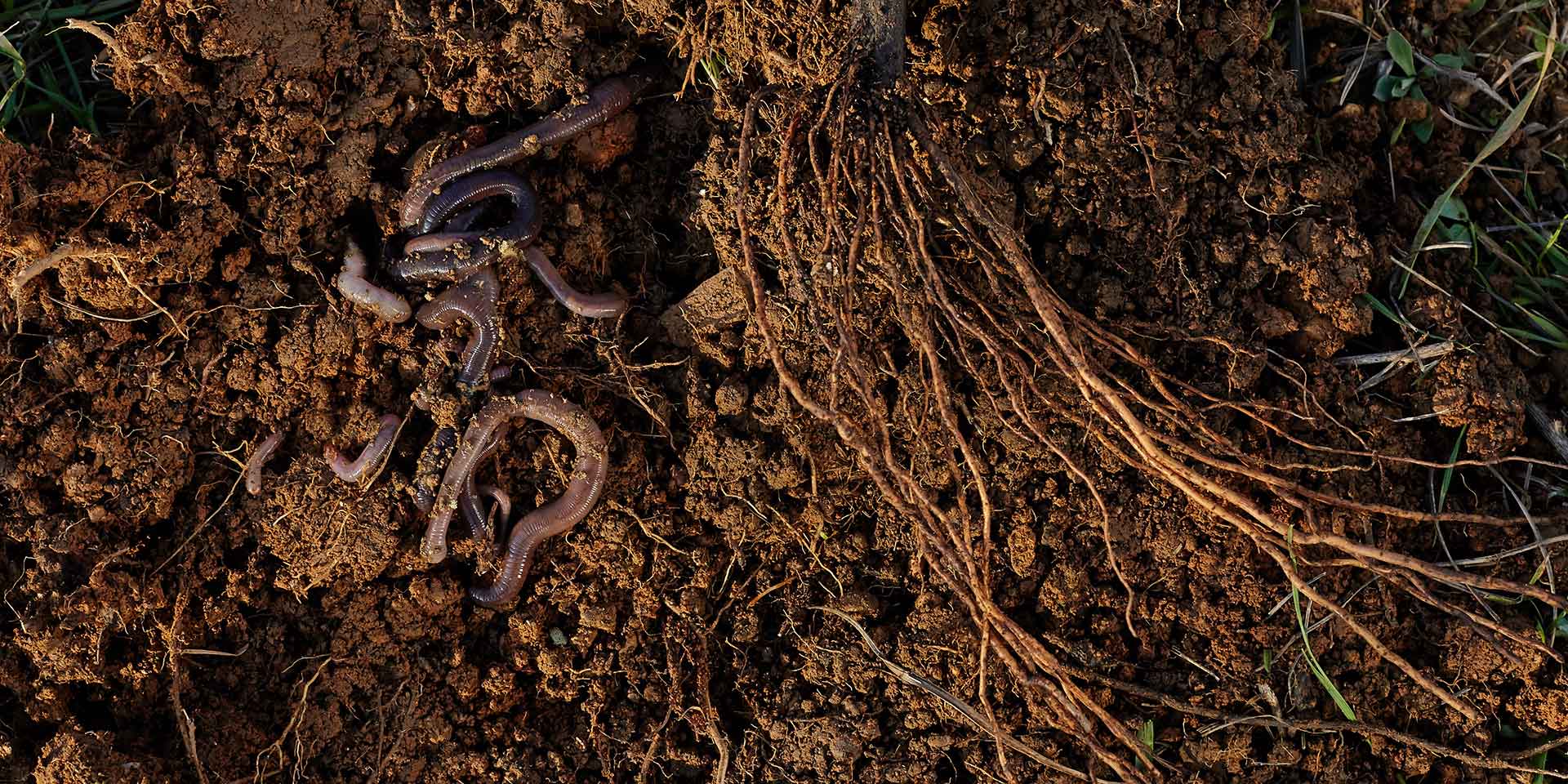Is Glyphosate a “Common Denominator” in Collapsing Environmental and Human Health?
That synthetic chemicals are proliferating in our environment, leading to severe ecosystem breakdowns and grave effects on human health, has been a fact hard to ignore in recent months. In April in Florida, a phosphogypsum plant sprang a leak, releasing thousands of gallons of contaminated wastewater left over from the fertilizer-making process into the soil and the Tampa Bay, with a summer of oxygen-depleting algal blooms anticipated as a result. That same month, new research into the generational effects of now-banned DDT showed that the granddaughters of women exposed to the pesticide in the 1960s were at higher risk for obesity and breast cancer. In June came a study highlighting the abundance of endocrine system-disrupting PFAS “forever chemicals” in cosmetics. Other reports show the toxic effects of agricultural chemicals on farmworkers, including children; on waterways; and on the soil microbiome.
Alarmingly, as a 2017 study made clear, “The diversity and quantity of synthetic chemicals created, distributed, and released into ecosystems have been increasing at rates greatly surpassing those of other drivers of global environmental change.” To put it another way, we are stewing in toxins of our own making, to the detriment of all life.
Yet another in a long list of troubling chemicals is glyphosate, a component of brands like Roundup and Ranger Pro. It’s the most heavily sprayed herbicide in the world, with usage climbing 100-fold since it was introduced in the 1970s, with its steepest rise tied to their partnered and patented use with GMO crops. It’s been linked to cancer — there have been 125,000 or so lawsuits brought against Bayer (which purchased original maker Monsanto in 2018) in the US, with 96,000 of them settled with $9.6 billion — as well as to disruptions of the endocrine system and birth defects. It’s the solitary subject of two new books: “Toxic Legacy” by Stephanie Seneff, an MIT senior research scientist; and “The Monsanto Papers” by agriculture and environmental journalist Carey Gillam.
Glyphosate, Seneff points out, has well-documented harms. In spite of this, the Environmental Protection Agency (EPA) refuses to ban it, relying on corporate-financed, conflict of interest research to claim that the chemical is non-carcinogenic and that anyway, it’s a lot less dangerous than atrazine or paraquat; similarly, a new EU assessment concludes that the chemical “meets the approval criteria for human health.” This despite the fact that EPA released its own evaluation that found that glyphosate was likely to injure or kill 93 percent of plants and animals protected by the Endangered Species Act. And despite a Statement of Concern issued by 14 scientists cautioning that it was responsible for contamination of drinking water, precipitation, and air and that its half-life is longer than originally thought; and that regulatory estimates for how much we can reasonably consume are based on outdated science.
Even as a stand-alone hazard — without considering how it interplays with all the other dangerous chemicals accumulating out there in the world — glyphosate is a lot. And it’s precisely its bounty of adverse effects that sparked Seneff’s interest.
The closer she looked, the more connections Seneff found between glyphosate and Alzheimer’s and other neurological disorders, celiac and other autoimmune diseases, diabetes, encephalitis, inflammatory bowel and liver disease, and obesity, all of which are associated with gut dysbiosis. The reason, Seneff reports, is that studies show that glyphosate harms human gut microbes, making them unable to produce the amino acids that essential to human health and allowing pathogens to thrive. Microbiomes have been a huge and varied area of study in the last decade; research from last year backs up the connection Seneff makes between glyphosate and the human gut microbiome, finding that more than half the species living there are potentially sensitive to the chemical.
Seneff saw links, too, to the snowballing loss of species and ecosystem failures — Gillam’s book also makes mention of concerns about glyphosate’s potential role in collapsing Monarch butterfly populations — with glyphosate disrupting the life in the soil microbiome in much the same way that it disrupts the human microbiome, interfering with the relationship between plant roots and soil microorganisms. “Glyphosate kills the organisms living in the rhizosphere, which then interferes with a plant’s nitrogen uptake, as well as the uptake of many different minerals…Glyphosate also causes exposed plants to be more vulnerable to fungal diseases,” she writes.
“Something terrible seems to be affecting every living thing on the planet — the insects, the animals, and the health of human beings, including children,” Seneff summarizes in “Toxic Legacy.” “Something hiding in plain sight. While we can’t reduce all environmental and health problems to one insidious thing, I believe there is a common denominator. That common denominator is glyphosate.”
The book is a science-heavy primer on the history and origins of glyphosate and its use in GMO commodity crops, as well as some of the pushback against claims of glyphosate’s dangers, the ways it disrupts microbial pathways in both soil and human guts, and how it lingers in the body (and everywhere) long after exposure, incorporating itself into our proteins. “Monsanto said, it’s so great, it breaks down in the soil in two weeks — that’s been their messaging. But it’s not true,” Seneff says. By way of example, she mentions a new Canadian study that found that 12 years after trees were sprayed with glyphosate they still held the chemical in their tissues. “It’s actually very, very slow to break down under certain circumstances; it accumulates in the tissues and it’s hard to undo the damage. In fact, we don’t know how to,” she says.
She also points out that, as with the DDT, there’s research uncovering epigenetic effects of glyphosate: The grand- and great-grandbabies of glyphosate-exposed female rats develop prostate, ovarian, and kidney disease, obesity, and birth abnormalities. “It’s a mess,” says Seneff while decrying the fact that too little is being done in the ag sector to contend with the realities of synthetic chemicals or to figure out how to wean our dependence on them. “We need to face up to the fact that we need to reshape the way we do agriculture.”
Although it’s received reviews comparing it in importance to Rachel Carson’s groundbreaking work on DDT, “Silent Spring,” “Toxic Legacy” also bears enthusiastic blurbs from anti-vaxxer Robert F. Kennedy, Jr., and several “alternative” medicine proponents. These have the unfortunate effect of dampening Seneff’s message. Although as Kirkus Reviews points out, the book nevertheless has two important takeaways: It establishes glyphosate’s ubiquitousness — showing up everywhere and “nearly impossible for the most diligent person to avoid,” as Seneff writes; and it re-establishes the ways in which its corporate maker has played down the chemical’s dangers and censored non-industry science.
As a counterpoint to Seneff’s research-based methodology, Gillam’s book weaves a similar tale of glyphosate’s toxic history, troubling lack of regulatory oversight by the EPA and other bodies, and corporate coverup of damning science — how some EPA scientists sought “possible carcinogen” status for the weedkiller, only to have Monsanto push back to achieve a designation that allowed some brands containing glyphosate to mark themselves “safe enough to drink.” In “The Monsanto Papers,” though, Gillam accomplishes this by focusing on the first winning glyphosate-based lawsuit brought against the company.
In a follow-up to Gilliam’s 2017 glyphosate expose, “Whitewash,” “The Monsanto Papers” is mostly the story of one victim of the chemical, California public school groundskeeper Dewayne “Lee” Johnson. Gillam paints an intimate portrait of Johnson and the way in which his life was upended by two accidents with glyphosate-based weedkillers, which led to his rapid consumption by painful and debilitating squamous cell carcinoma, as well as a rare type of non-Hodgkin lymphoma. Through this she weaves the parallel story of the lawyers who brought his case to court; the ways they uncovered decades worth of Monsanto’s suppression of credible science and EPA’s culpability; and devastating details about the heavy human toll of glyphosate exposure.
Neither this case, in which Johnson eventually walked away with about $20 million, nor the more recent class-action win against the company, has yet resulted in any significant action by regulators. Home gardeners can still buy Roundup at their local Home Depot, industrial agricultural systems still spray millions of pounds of it every year on corn and soy fields, and EPA still asserts that the chemical poses “no risks of concern to human health.” In better news, as of this past April, several countries had banned glyphosate outright and others had restricted its use.
Get the latest food news, from FoodPrint.
By subscribing to communications from FoodPrint, you are agreeing to receive emails from us. We promise not to email you too often or sell your information.
Top photo by o_lypa/Adobe Stock.
More Reading
Busting common myths about organic food
December 23, 2024
Julie Guthman explains why Silicon Valley will not hack the future of food
November 4, 2024
Vandana Shiva is still mad
October 2, 2024
Cooking oils and sustainability
July 26, 2024
Why Heirloom Seeds Matter
August 18, 2023
Plastic-Coated Agricultural Chemicals are Destroying Human and Planetary Health
July 14, 2022
EPA Bans Chlorpyrifos, Finally
August 23, 2021
Consumers Are Concerned About Glyphosate Residue. So Why Is It Still in So Many Products?
August 12, 2020
Goodbye to Dicamba - For Now
June 10, 2020


